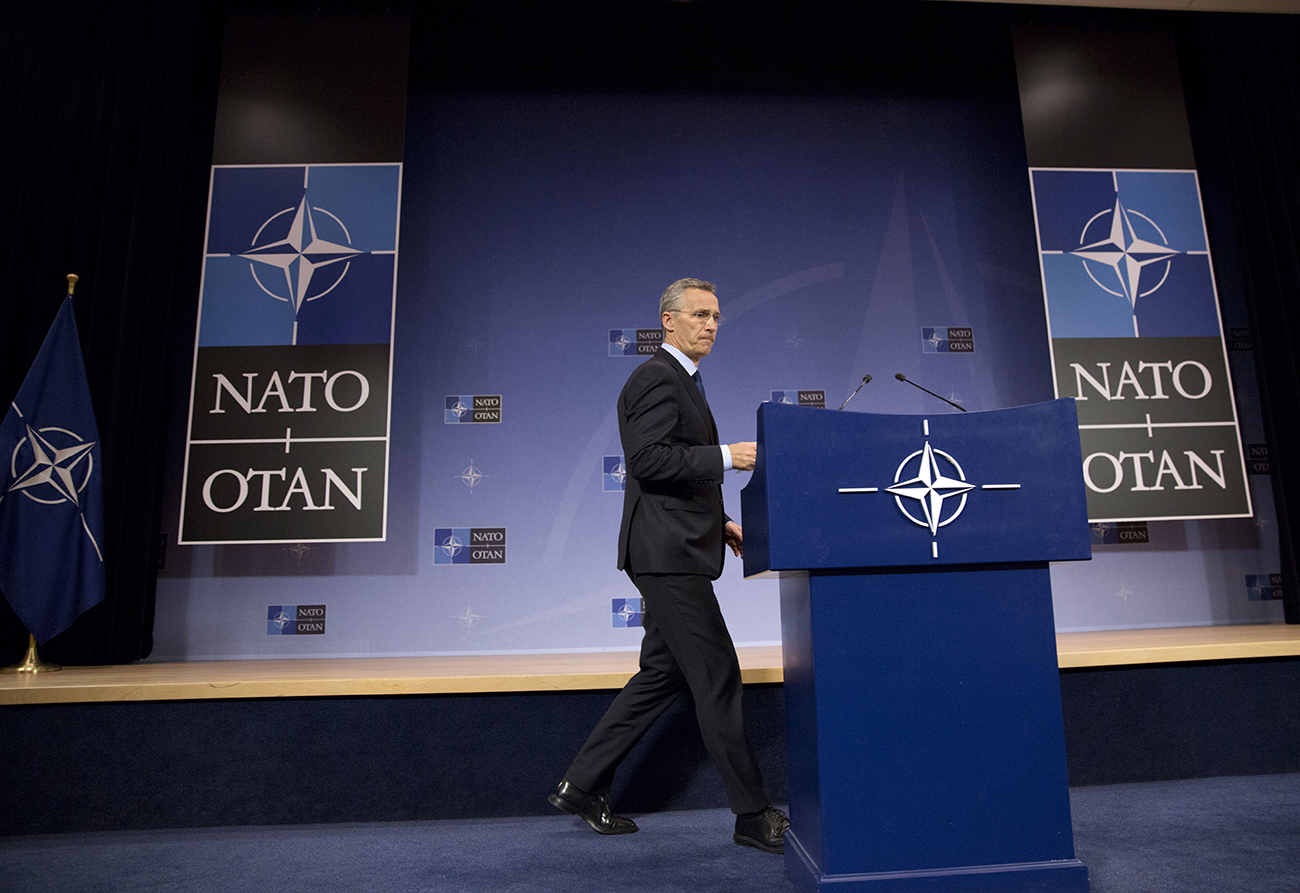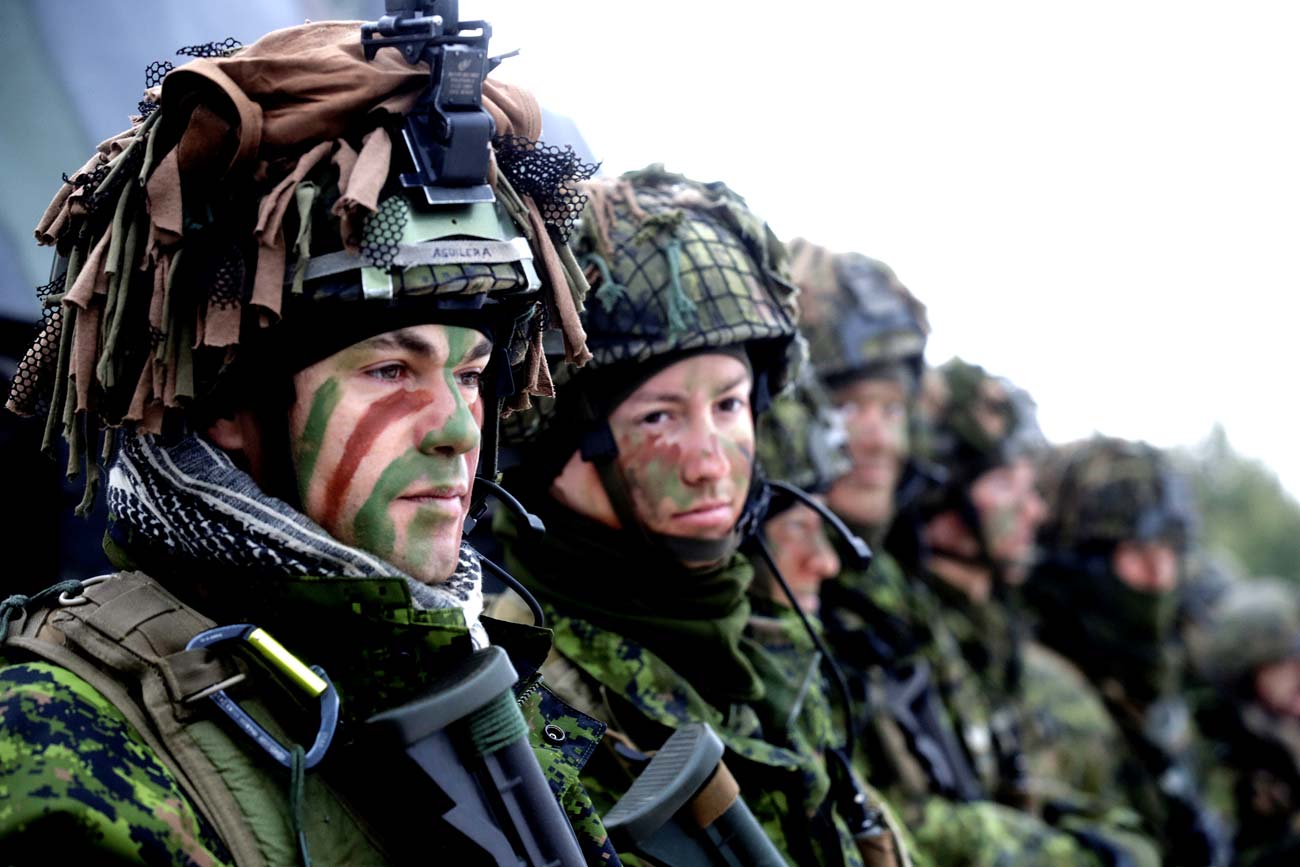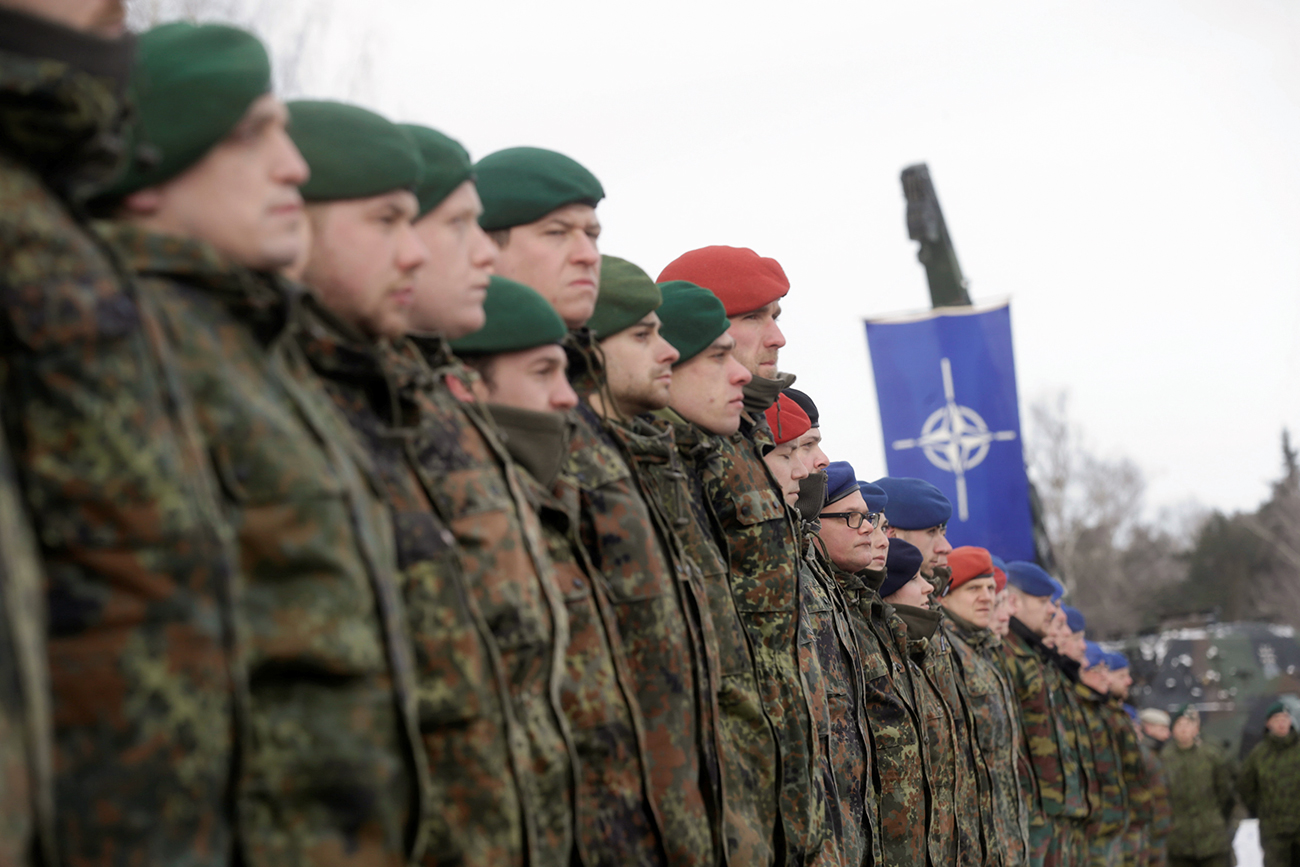Can NATO and Russia avoid a war in Europe?

NATO Secretary General Jens Stoltenberg arrives for a media conference after a meeting of the NATO-Russia council.
APThe Russia-NATO meeting took place amid an atmosphere of growing animosity and mutual suspicion. Some call it a `Cool War,’ but others worry that rising tensions might lead to a full-fledged confrontation on the continent.
Surprisingly, NATO Secretary General Jens Stoltenberg said the talks were “long” and “constructive.”
His appraisal reflects not so much the brief meeting’s content, because the exchange of information didn’t result in any breakthroughs, but rather the mere fact that NATO and Russia still are speaking to each other.
This comes despite a strong warning from Moscow, articulated by Foreign Minister Sergei Lavrov, that there will be “no more business as usual” with the West. Therefore, we have good reason to utter a sigh of relief, right?
NATO prepares for war
Over the past several years, Moscow has been worried by the following: NATO enhances its military infrastructures, deploys sophisticated weaponry capable of launching nuclear warheads, and beefs up its forces along Russia’s western borders.
Additional NATO troops are about to be sent to Poland, Latvia, Lithuania, Estonia, Romania, and Bulgaria, and a NATO naval force is stationed in the Black Sea, including warships from non-littoral states like Poland, Germany and Spain.
In January, the 4th Infantry Division’s 3rd Armored Brigade Combat Team landed in the German port of Bremerhaven. Then, all 3,000 soldiers and 2,600 pieces of equipment, including 87 tanks, 18 Paladin self-propelled howitzers, and 144 Bradley fighting vehicles, made a highly publicized trek across Europe to western Poland.
Also in January, M1A2 battle tanks had target practice in Swietozow in Poland, and in February, American soldiers conducted urban assault training at the Gaiziunai Training Area in Lithuania.
In March, the Allied Spirit VI exercise included about 2,770 participants from 12 NATO and partner nations, testing communications among alliance members while live-fire exercises with howitzers were held at the Grafenwoehr Training Area in Germany.
A mere glance at the map of “Recent U.S. military events in Europe” on the U.S. Defense Department’s website shows that approximately three out of four military exercises have been held in Eastern Europe, and in the case of the Baltic states, in close proximity to Russia’s borders.
In total, NATO plans to hold 28 joint military exercises along Russia’s borders in 2017 that involve 60,000 service personnel.
One of the main goals, spelled out by Major General Duane Gamble of the 21st Theater Sustainment Command, is to prepare the ABCT (armored brigade combat team) to be ready for exercises within 72 hours, which are in fact preparations for real combat.
Since the U.S. military doctrine defines Russia as the number one geopolitical adversary, and various clans of American politicians indulge in bellicose rhetoric against a country they regard as the ‘heir apparent’ to the Soviet ‘evil empire,’ Moscow has no other choice but to assess these developments as the most acute security threat since the end of Cold war.
Ukraine and mutual misunderstanding
The Russia-NATO Council revealed, as Stoltenberg put it, “clear disagreements” on what is happening in Ukraine and what to do there. NATO’s secretary general urged Moscow “to use its significant influence on the militants” in eastern Ukraine to ensure that the commitments stipulated in the Minsk agreements are not violated.
One could have forecasted with 100 percent certainty that the two sides would not agree on the root causes of Ukraine’s civil war, as well as how to stop the slow-motion disintegration of that once strong and prosperous country.
Unfortunately, there’s little chance that NATO will soften its rigid stance on the Ukrainian crisis. Why? Many strategists in Moscow, who might be described by Western observers as “conservatives,” strongly believe that NATO follows the philosophy and orders of the far-right Neocon faction in the Bush and Obama administrations, and was eager to indulge in provocative and irresponsible moves in Ukraine.
There’s a nagging suspicion that significant numbers of U.S. military and intelligence personnel among the Ukrainian armed forces that launched the attack on the rebel republics of Donetsk and Lugansk in the summer of 2014 weren’t there just to gather information.
The ultimate goal of the Victoria Nulland-sponsored coup d’état in Kiev was to provoke Russia into using force to topple the ultra-nationalist, pro-Western government in Kiev.
This would provide NATO with the perfect raison d'être for years to come, and would make all the retired Cold War warriors rejoice and sing out loud, “Happy days are here again.” It would give pretext to crush dissent within the ranks of both NATO, and to unite in the face of the new-old adversary.
Until Ukraine parts with illusions over what really happened in Kiev in February 2014 and comes clean as far as who led the country astray and betrayed the aspirations of the people, the West and NATO will most likely continue to view Russia’s closest relative and neighbour as an instrument of containment, or at least as a tool of annoyance.
Viral anti-Russian hysteria
The security risks related to NATO’s build-up and advance to Russia’s borders, whether real or imagined, will compel the Kremlin to take pre-emptive measures, enhancing retaliatory potential capable of inflicting unacceptable damage on the Western military alliance.
Given NATO’s ultimate conventional superiority, Russia has to rely heavily on its nuclear deterrence. The use of nuclear weapons, probably at the early stage of a possible Western attack on Russia, is firmly rooted in its military doctrine.
It doesn’t sooth any fears that this apocalyptic scenario will never materialize, does it? It’s reminiscent of MAD, the Mutually Assured Destruction concept of deterrence from the days of the Cold War. No good.
It’s worth quoting the well-meaning words of Richard Sokolsky, the non-resident Senior Fellow of Russia and Eurasia Program at the Carnegie Endowment for International Peace:
“The West and Russia may or may not be locked into a new Cold War in Europe, but their adversarial relationship could lead toward greater confrontation and possible conflict… Both sides need to borrow a page or two from the U.S.-Russian Cold War playbook to prevent their `cool war’ in Europe from becoming hot.”
Should NATO fail to follow the Carnegie expert’s advice, and if the current anti-Russian hysteria continues to spread like a virus, then the situation on the ground, according to Murphy’s Law, will invariably “evolve from bad to worse.”
Consequently, the continent that is our common home will increasingly resemble not a unique civilization, but rather a theatre of potential war, which of course has been a recurring theme in European history for far too long. Isn’t it time to stop and reverse this trend?
With this in mind, it’s encouraging that NATO hasn’t shut Russia out entirely, and keeps the door ajar for dialogue.
Vladimir Mikheev is a freelance commentator for Russia Beyond The Headlines. His opinion does not reflect the position of RBTH or its staff.
If using any of Russia Beyond's content, partly or in full, always provide an active hyperlink to the original material.
Subscribe
to our newsletter!
Get the week's best stories straight to your inbox



